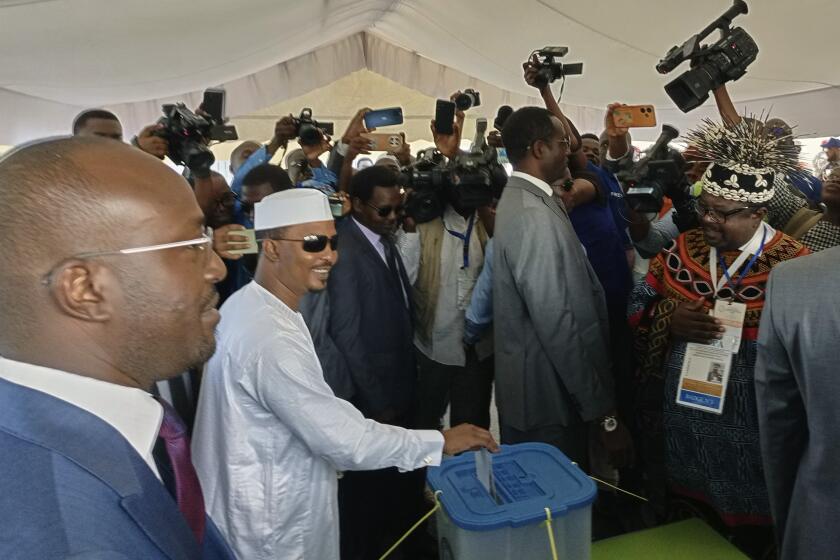Mexico Caps Interest Rates to Aid Debt Crisis : Peso: Limits agreed to by government and banks. Currency devaluation has caused bad-loan portfolio to balloon.
Mexico put a cap on soaring interest rates Wednesday as part of an attempt to defuse its mounting debt crisis.
Interest rates on existing business loans will be limited to 25%, and to 38.5% on credit card loans, under an agreement negotiated between the Finance Ministry and the Mexican Bankers Assn. The cap affects only outstanding debt, not new loans.
Mortgages will peak at 6% if homeowners agree to renegotiate the principal owed, under a complex system that integrates inflation rates into the value of the principal.
The bankers also agreed to halt foreclosures until Oct. 31, to absorb part of the administrative costs of restructuring loans and to stop charging late-payment fees.
“We think this is an extremely important step in helping those who want to pay their debts,” a senior Finance Ministry official said.
The bad-debt portfolio of Mexican banks has swelled to 15% of total outstanding loans as some interest rates have exceeded 100%. High interest rates are a result of the economic crisis provoked by the devaluation that has cut the peso’s value more than 40% since December.
In response, farmers, small-business owners and credit card holders have banded together in increasingly militant movements to demand debt relief, insisting that the government and banks share the burden.
The program announced Wednesday is expected to cost banks slightly less than $1 billion and the government slightly more than $1 billion.
The cost to banks will come out of their margins, the difference between the market rate they pay on savings accounts and the now-lower rates they will be charging on loans. The government will absorb some of that cost by loaning the banks money at interest rates lower than they would have to pay on savings accounts.
Finance Ministry officials said the program would cut interest payments in half for 75% of all bank debtors.
The announcement was greeted with skepticism by consumer and small-business debtors as well as independent economists.
“On one hand, this is good because it is a mechanism that will get the banks lending money again,” said economist Luis Rubio. “But it is a bad precedent for the government to solve the problems with taxpayer money. There is also the problem of free riders, businesses that are capable of paying but are being subsidized by the taxpayers.”
But the Finance Ministry argued that there will be no free rides, because in order to benefit, debtors must agree to pay their loans.
The lower interest rates are applicable only to loans with less than a specified balance. For example, in the case of businesses, only balance of less than $33,000 are affected. Balances over that amount will be subject to market rates.
“This could just turn out to be an aspirin,” said Federico Abrego, a lawyer who specializes in small-business consulting. “They cooked this up pretty fast.”
He said the limits on balances are ludicrous, given the much larger amounts that most businesses owe.
But the Finance Ministry official said the program is “meant to help a specific group of debtors. This is to help small businesses and individuals.”
He argued that the price the government will pay in this attempt to end the crisis will turn out to be much cheaper in the long run than any other alternative.
More to Read
Start your day right
Sign up for Essential California for news, features and recommendations from the L.A. Times and beyond in your inbox six days a week.
You may occasionally receive promotional content from the Los Angeles Times.






